
What Bread Says About Women
May 21, 2015
Weekly Roundup: From Slicing Bread to Saving Honeybees
May 23, 2015Through a city council vote or ballot measure, assorted municipalities across the U.S. have decided to raise their minimum wage to $15 an hour. For Los Angeles the target date is 2020; Seattle 2017; San Francisco 2018. With federal gridlock the reason reason for local action, the minimum wage is being discussed by politicians and voters in a long list of places stretching from New York to South Dakota and beyond.
Where are we going? To the minimum wage debate.
Some History
Towards the end of the 1937-1938 recession, the Congress passed the Fair Labor Standards Act and the President signed it. Although it mandated $.25 as the first federal hourly minimum wage and affected less than one-fifth of the labor force, the Act was controversial. The night before signing the bill, President Roosevelt said in his fireside chat, “Do not let any calamity-howling executive with an income of $1,000 a day, …tell you…that a wage of $11 a week is going to have a disastrous effect on all American industry.”
How Much
In real dollars the federal minimum wage has gone up and down:
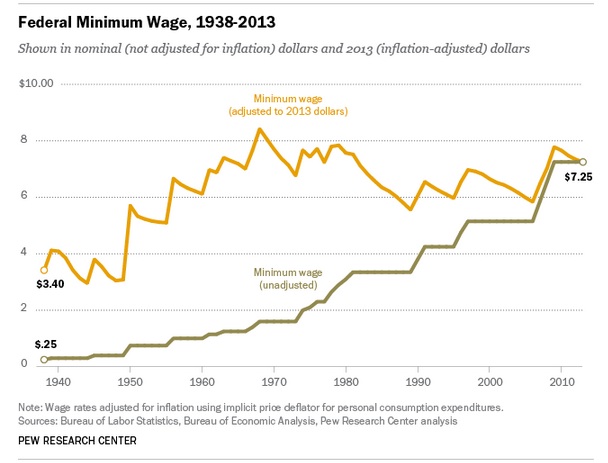
Who
By Occupation
Shown below, 4.3 percent of the 79.4 million workers paid an hourly rate received the minimum wage or less in 2013. (We should note that in 2014 there were 77.2 million workers paid an hourly rate; 3.9 percent earned the minimum wage or less.)
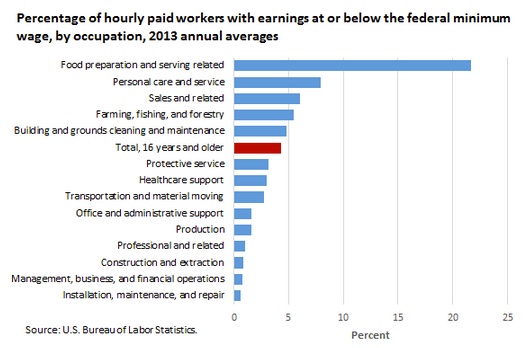
By Gender
At 5 percent for women and 3 percent for men, in 2014, the numbers continued the trend displayed below.
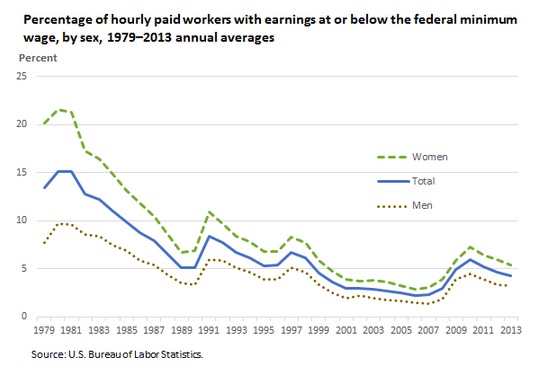
By Age
Similar to the 2013 statistics below, in 2014 workers 25 years old or younger were 20 percent of all hourly paid labor but 50 percent of all who earned the minimum wage or less.
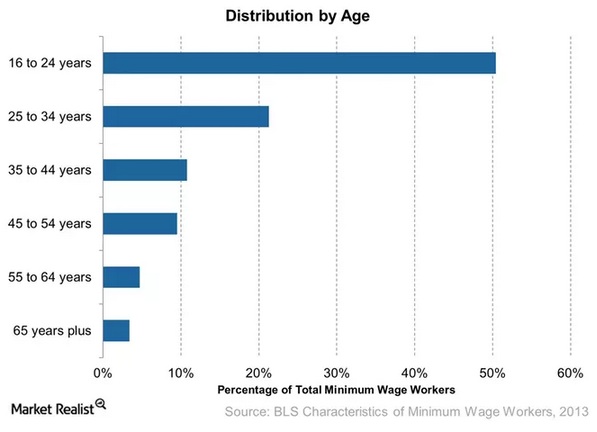
Our Bottom Line: The Debate
On raising the minimum wage, economic opinion is pretty much split. One group concludes there is no minimum wage impact, a second cohort says there is job loss and a third faction cites jobs gains. Including some auspicious names, most have a pretty impressive selection of statistics to prove what they believe and yet each side says the opposition’s conclusions are flawed. From what I could discern, one central problem is the difficulty of constructing a viable counterfactual version of what actually happened.
Simplifying voluminous research…
On the “no” side economists have said…
- lower employment among low skilled workers because of less productivity per wage hour
Here is a floor that illustrates the unemployment they predict:
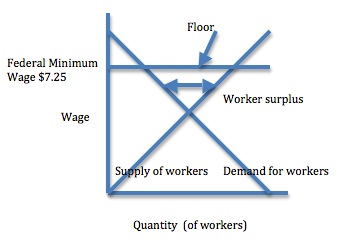 For the “yes” position, a higher minimum wage will…
For the “yes” position, a higher minimum wage will…
- prevent worker exploitation by bosses with more power
- boost aggregate demand by increasing purchasing power
- create the incentive to worker harder
![econlifelogotrademarkedwebsitelogo[1]](/wp-content/uploads/2024/05/econlifelogotrademarkedwebsitelogo1.png#100878)



